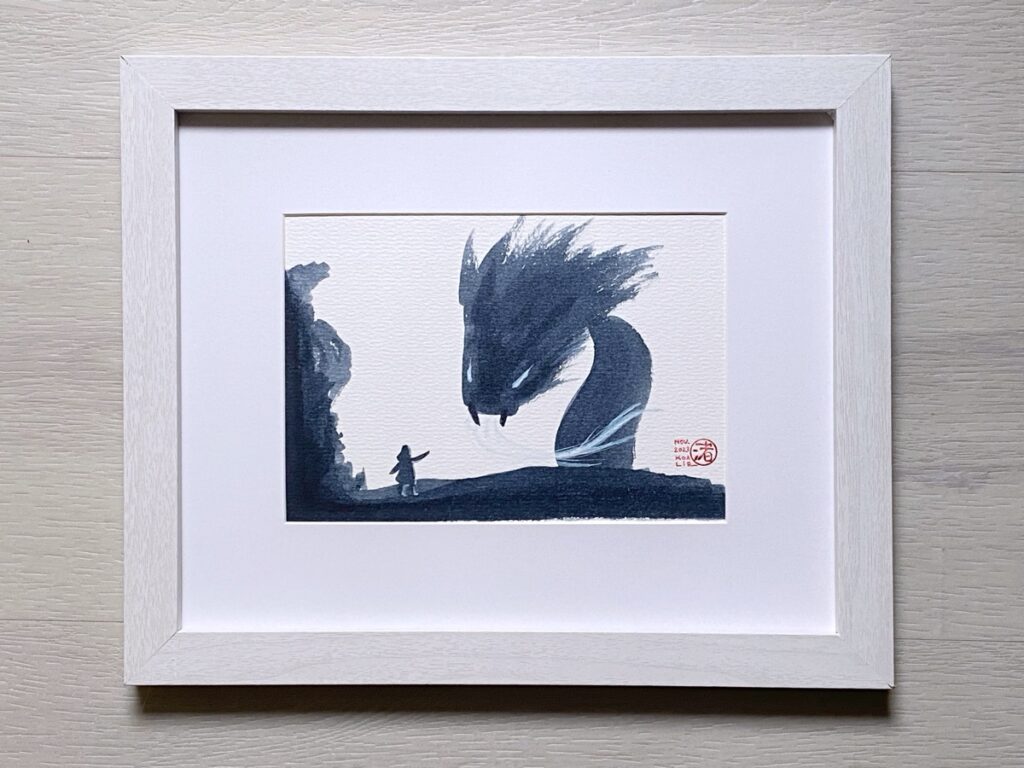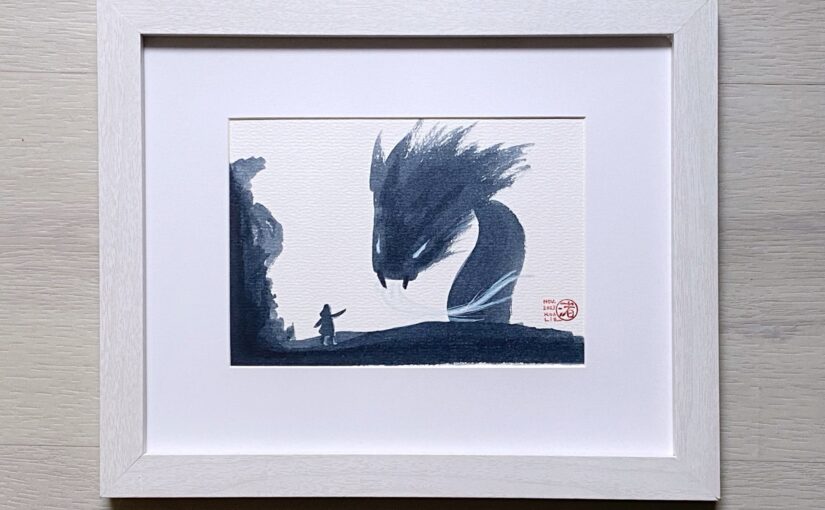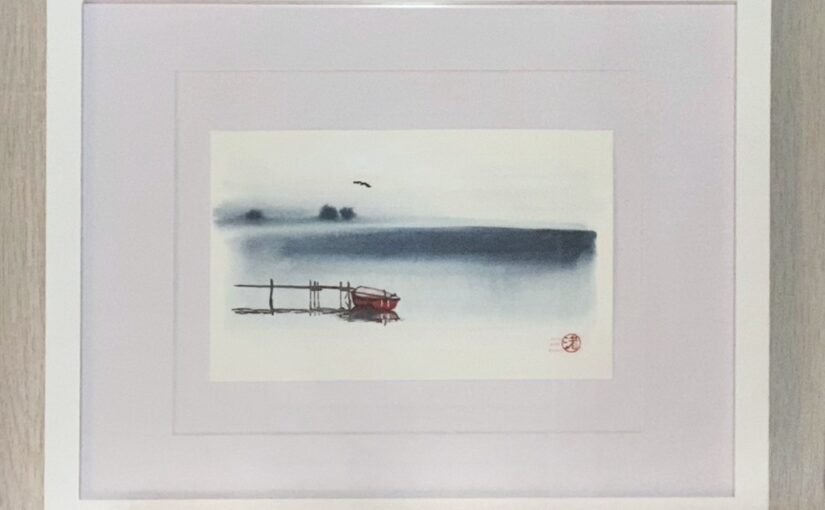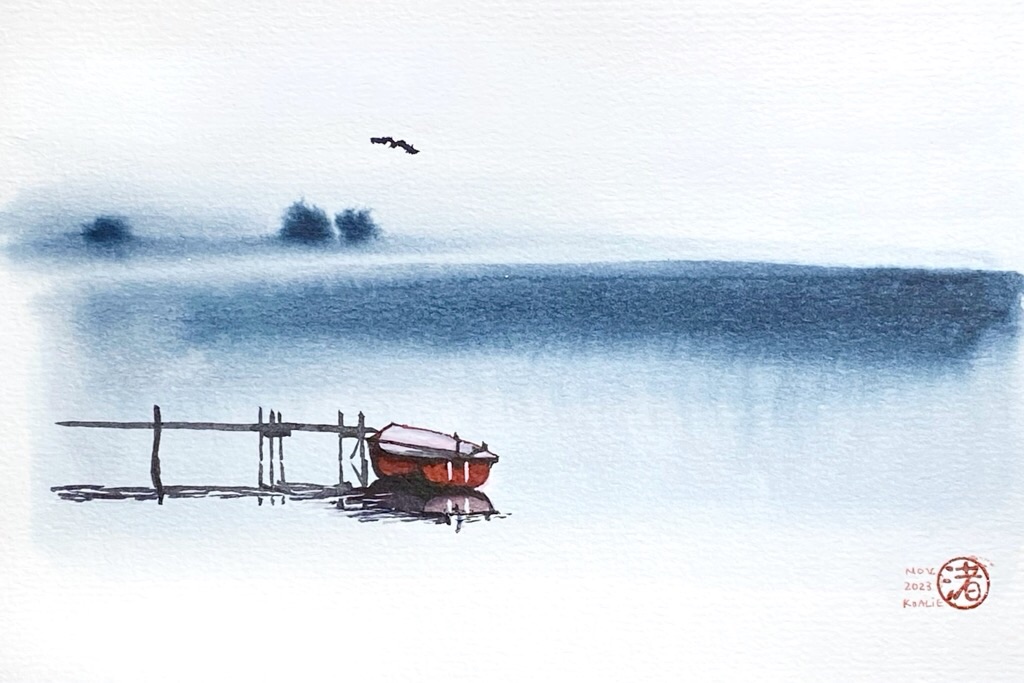
For my son’s 16th birthday, I painted a dragon. Adrien wanted me to paint some version of Toothless and Light Fury from the movie series “How to train your dragon”. I had intended to paint them in gouache. But in the meantime I discovered the Sennelier Payne’s Grey ink brushpen.
This is after a digital artwork sketch by William Morris-Julien who is creative director in the video games industry.

Resulting painting framed in white wood. The picture mount hides the birthday greeting.
He liked it well enough.




